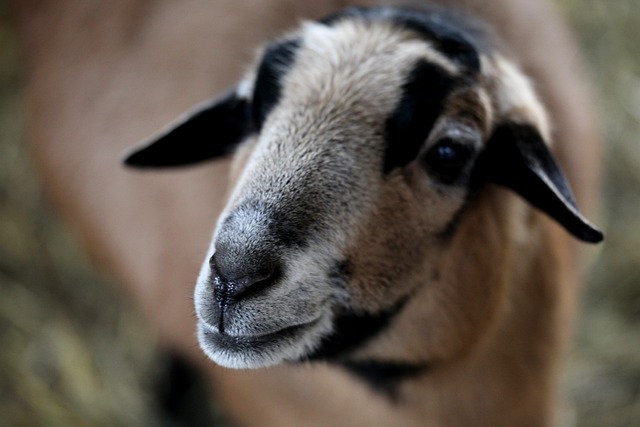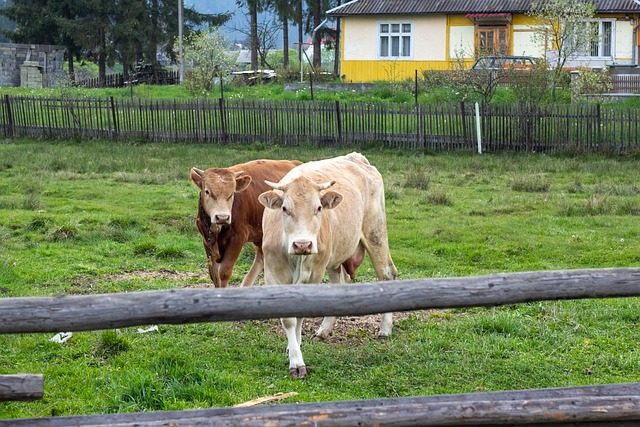While organic waste often ends up in landfills, the European Union sees it as a golden opportunity for sustainable animal feed. You might wonder how insects fit into this picture. The EU’s forward-thinking policies, like the Waste Framework Directive and Regulation (EU) No 2017/893, are paving the way for insects to transform organic waste into nutrient-rich animal feed. But how exactly do these regulations encourage innovation, and what are the real benefits for the environment and agriculture? Let’s uncover how the EU is turning waste into a valuable resource.
EU’s Waste Management Initiatives

In recent years, the EU has implemented stringent waste management initiatives aimed at reducing organic waste and promoting circular economy practices. You can see this effort in the revised Waste Framework Directive (2008/98/EC), which sets clear targets for waste reduction and recycling. The directive emphasizes the importance of treating organic waste separately to prevent contamination and maximize recycling efficiency.
One significant measure is the Waste-to-Energy (WtE) strategy, which converts non-recyclable waste into energy. By leveraging this technology, the EU aims to reduce landfill dependency and cut greenhouse gas emissions. You can observe successful implementations in countries like Sweden and Germany, where they’ve drastically reduced landfill usage while generating renewable energy.
The EU also promotes composting and anaerobic digestion as viable methods for managing organic waste. Composting transforms organic waste into nutrient-rich soil amendments, while anaerobic digestion breaks it down to produce biogas and biofertilizers. The EU’s support for these processes is evident in funding programs and subsidies for local governments and businesses adopting these technologies.
Another notable initiative is the Circular Economy Action Plan (CEAP), which aims to ‘close the loop’ of product lifecycles by improving recycling and reusing practices. Under CEAP, the EU encourages member states to develop national strategies for reducing food waste, focusing on prevention, donation, and valorization of surplus food.
These initiatives demonstrate the EU’s commitment to sustainable waste management. By setting ambitious targets and providing financial support, the EU is driving innovation and encouraging the adoption of efficient organic waste management practices. These efforts not only mitigate environmental impact but also pave the way for novel solutions, such as using insects to convert organic waste into valuable animal feed.
Insect-Based Feed Advantages
Building on the EU’s waste management initiatives, insect-based feed presents a sustainable and efficient method for converting organic waste into high-quality animal nutrition. By leveraging insects like black soldier flies and mealworms, you can reduce organic waste while producing protein-rich feed that’s ideal for livestock and aquaculture.
One significant advantage of insect-based feed is its high nutritional value. Insects contain essential amino acids, fats, and micronutrients that are comparable, if not superior, to traditional feed sources like soy and fish meal. For example, black soldier fly larvae are about 42-45% protein, making them an excellent alternative protein source. This can help you ensure that your animals receive a balanced diet without relying on over-exploited resources.
Furthermore, insect farming is highly resource-efficient. Insects require significantly less land, water, and feed compared to conventional livestock. For instance, producing one kilogram of insect protein uses just a fraction of the water and land needed to produce the same amount of beef or soy protein. This efficiency can dramatically lower your environmental footprint and contribute to more sustainable agricultural practices.
Another key advantage is the rapid growth and reproductive rates of insects. Black soldier fly larvae can mature in just 14 days, allowing you to quickly convert organic waste into valuable feed. This rapid lifecycle means you can continuously process waste and produce feed, creating a closed-loop system that minimizes waste generation and maximizes resource use.
Lastly, insect-based feed can mitigate dependency on traditional protein sources, thus enhancing food security. By diversifying feed options, you reduce vulnerability to market fluctuations and supply chain disruptions, ensuring a more stable and resilient food system.
Regulatory Framework and Policies

How does the current regulatory framework shape the development and adoption of insect-based animal feed?
Regulations play a crucial role in determining how quickly and effectively new technologies, like insect-based feed, can be implemented. In the European Union, the regulatory environment is both an enabler and a barrier for this innovative sector. The EU’s stringent food safety standards ensure that any product, including insect-based feed, meets high-quality benchmarks before it reaches the market. This protects consumers and animals but also requires producers to navigate a labyrinth of compliance measures.
For instance, Regulation (EU) No 2017/893, which permits the use of certain insect proteins in aquaculture, was a significant milestone. It demonstrated that regulatory bodies are willing to adapt to new scientific evidence. However, the regulation also limits the types of organic waste that can be used to rear insects, ensuring only specific, uncontaminated feedstocks are utilized. This constrains the industry’s ability to scale rapidly, as sourcing approved feedstock can be challenging.
National policies within the EU also vary, creating a patchwork of regulations that companies must comply with. This inconsistency can impede cross-border trade and complicate the regulatory landscape for businesses operating in multiple countries.
Moreover, the regulatory framework affects investment in this sector. Investors are more likely to fund companies that operate in a clear, predictable regulatory environment. Uncertainty or overly restrictive regulations can deter investment, slowing down innovation and commercialization.
Technological Innovations
Recent technological advancements are revolutionizing the production and efficiency of insect-based animal feed. Automated systems now allow you to streamline the rearing and processing of insects, significantly reducing labor costs and increasing scalability. For instance, robotic harvesting systems can sort and process larvae more quickly than manual methods, ensuring higher productivity.
You can also leverage innovations in sensor technology to monitor the environmental conditions of insect-rearing facilities. Temperature, humidity, and even the health of insect colonies can be tracked in real-time using IoT devices. This data-driven approach helps you optimize conditions for maximum yield and quality, thereby reducing waste and improving sustainability.
Biotechnology has made it easier to enhance the nutritional profile of insect feed. Genetic engineering techniques enable you to modify insects to be more nutritious or resistant to diseases. For example, researchers have developed genetically modified black soldier flies that can break down organic waste more efficiently, resulting in higher protein content in the larvae.
Advancements in feed formulation technology also allow you to create more balanced and effective insect-based feeds. Using precision nutrition, you can tailor the feed to meet the specific dietary needs of different livestock species. This ensures that the animals get the right nutrients, leading to better growth rates and overall health.
Moreover, the integration of machine learning and artificial intelligence can help you predict and mitigate potential issues before they become critical. Predictive analytics can identify patterns in data that indicate suboptimal conditions or impending problems, enabling proactive management.
Future Prospects and Challenges
As the demand for sustainable and efficient animal feed continues to grow, you’ll face both promising opportunities and significant challenges in the future of insect-based feed production.
On the opportunity side, insects can convert organic waste into high-quality protein and fats, which can then be used as animal feed. This not only reduces waste but also lessens the environmental impact of traditional feed production methods. Studies have shown that insects like black soldier flies can effectively break down organic waste, offering a renewable source of feedstock. Moreover, the European Union’s regulatory support for insect-based proteins in aquaculture and poultry feeds indicates a growing acceptance and potential market expansion.
However, you’ll also encounter several challenges. Regulatory hurdles remain a significant barrier, especially in regions where insect-based feeds aren’t yet approved. Ensuring the safety and quality of insect-derived products is crucial, and stringent standards must be met. Additionally, scaling up production to meet commercial demands poses logistical and technological challenges. Mass-rearing insects requires precise environmental control and significant initial investment.
Economic viability is another critical factor. The cost of producing insect-based feed must be competitive with traditional feed options. While technological advancements are driving down costs, further innovations and efficiencies are needed.
Consumer acceptance also plays a role, as market dynamics can be influenced by public perception. Education and marketing efforts are essential to shift consumer attitudes and increase demand for insect-based products.
Conclusion
You’ve seen how the EU’s waste management initiatives turn organic waste from a problem into a resource.
Insect-based feed offers a sustainable solution, reducing waste while providing high-quality animal nutrition.
Regulatory support and technological advancements make this not just a future possibility but a present reality.
Yet, challenges remain in scaling and public acceptance.
With innovation and policy, what seems like a futuristic concept is already feeding the animals of today.
